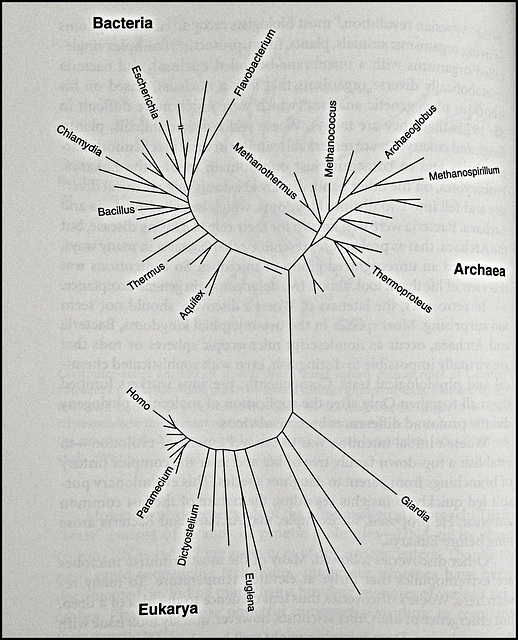Toledo Farms
What the plants have to 'say'
Drinking Life To The Lees
On a Winter Morning
On a Winter morning
THE TIDE
The Library hour
Lost in the withering petals
Lawrence of Arabia
A Neanderthal who's been given a shave and a new s…
Me & book buddy
Tolerance
Codex
Spring morning
Spring morning
Spring in Progress
Capitol Avenue
In the concrete jungle
Van Allen Belt
I'm going to make a cake
AN OCEAN OF AIR*
Into the dusk
Figure 7.8 Arc of Instablity
Перестро́йка / гла́сность ~ Perestroika / Glasnos…
Shimola
Toyota Prius
El Papagayo
Tacco
Tapato
El Papagayo
Library of Alexandria
Winter night
A leaf
Dogwood on a Spring day
Pioneer Monument
Queue
Before Smart phones
The Grapes of Wrath
To O'Hara from Jack London
Keywords
Authorizations, license
-
Visible by: Everyone -
All rights reserved
- Photo replaced on 29 Jan 2018
-
24 visits
Carl Woese compared the genetic sequence of many different organisms, especially, microbes, to construct phlogenetic tree of life


Carl Woese compared the genetic sequence of many different organisms, especially, microbes, to construct phlogenetic tree of life. He found three distinct branches of life, including the previously unrecognized Archaea. The majority of the most deeply rooted organisms are extremophiles living at high temperature
- Keyboard shortcuts:
Jump to top
RSS feed- Latest comments - Subscribe to the comment feeds of this photo
- ipernity © 2007-2024
- Help & Contact
|
Club news
|
About ipernity
|
History |
ipernity Club & Prices |
Guide of good conduct
Donate | Group guidelines | Privacy policy | Terms of use | Statutes | In memoria -
Facebook
Twitter

Woese's initial intention was to unravel aspects of evolution -- to establish a top-down family tree of life and infer the complex history of branching from parent to daughter species. This evolutionary pursuit led quickly to insights regarding the nature of the last common ancestor. He proposed, for example, that Archaea and Bacteria arose long before Eukarya. ~ Page 139
An important conclusion from these phylogenetic studies is that Earth's earliest cells were not so different from those of today. They probably relied on similar, though simpler, biochemical pathways. These similarities provide a clear focus for experimental studies of emergent biochemistry. ~ Page 141
Sign-in to write a comment.